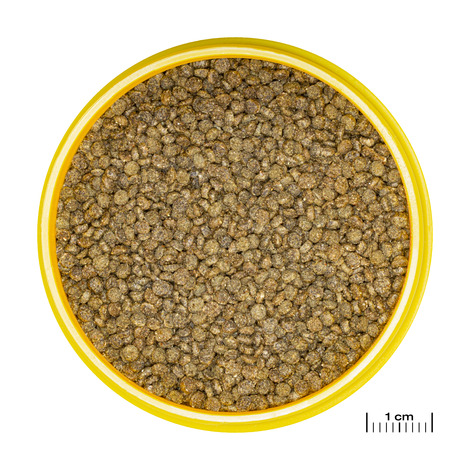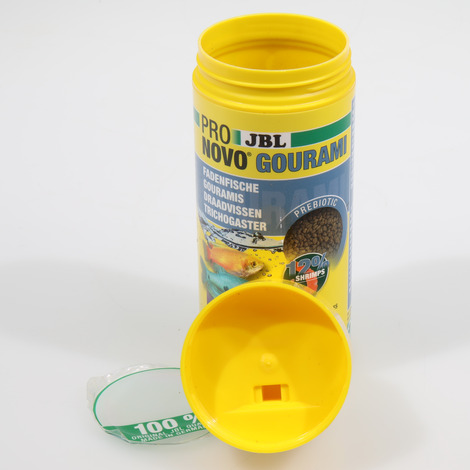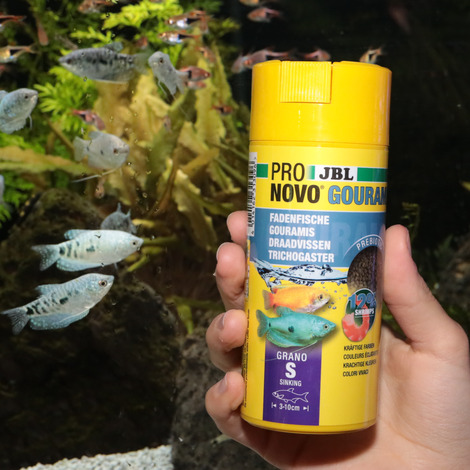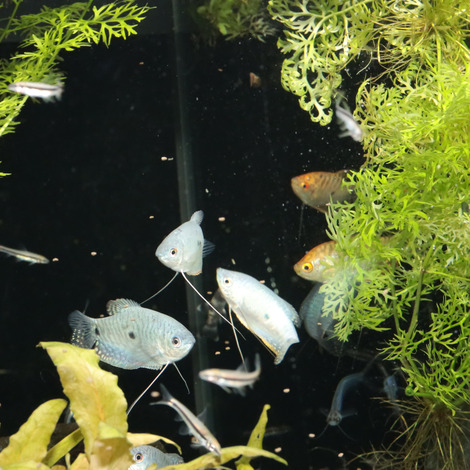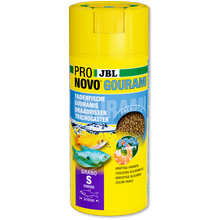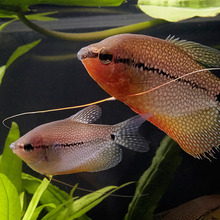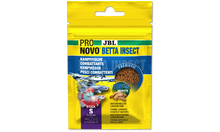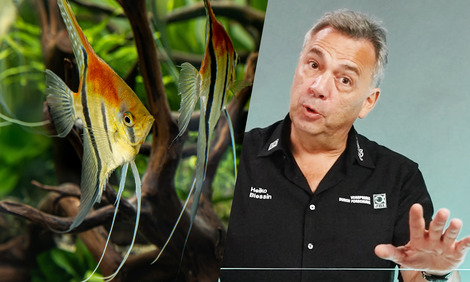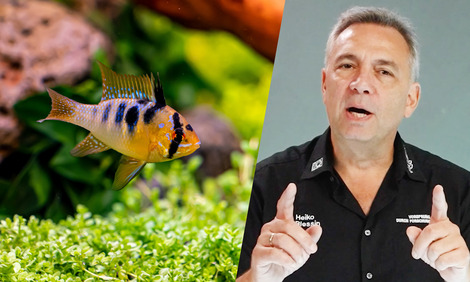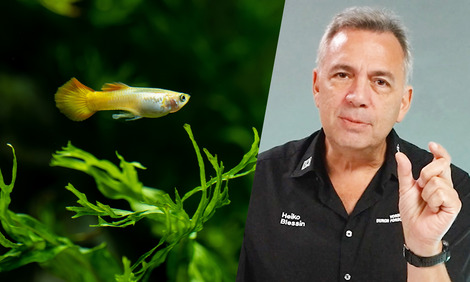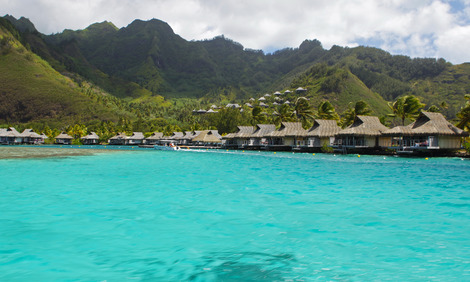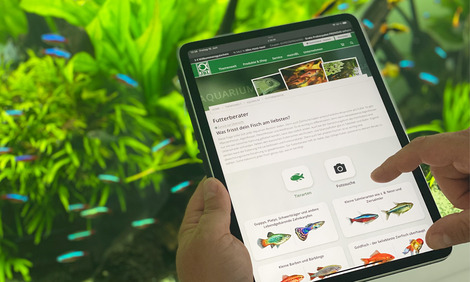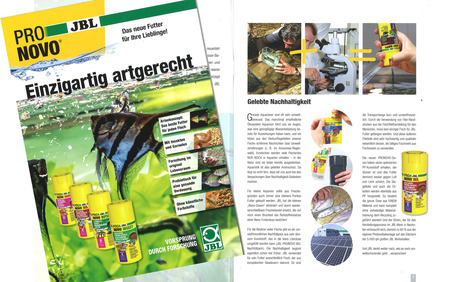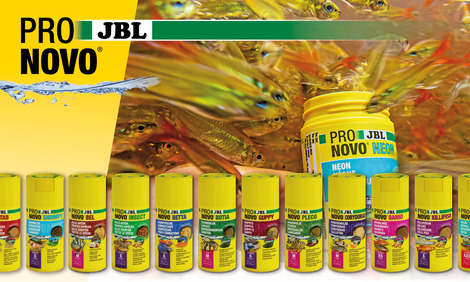Gouramis
All gourami species live in Southeast Asia and are true survival specialists. Even in very warm and oxygen-poor waters, they can survive by breathing atmospheric air thanks to their additional respiratory organ, the labyrinth. They love heavily planted aquariums and some floating plants, in which they also build their nests. They care for their brood and most species are not difficult to breed. By adding JBL Tropol you can turn your tap water into the tropical-like water that the fish know from their natural habitat. This is how they show their true blaze of colour! The superior mouth already indicates their feeding habits: they eat everything that falls onto the water surface. In the water, they are not choosy about food. They eat small crustaceans, plankton - in fact anything they can find. But it is precisely this finding that is often difficult: the waters are often extremely murky and so they use their "threads" (re-shaped ventral fins) to feel their surroundings and food. Over the years, very beautiful cultivated forms have been bred out of the original wild forms, which are now often more popular than the natural form.
Probiotic /Prebiotic
Probiotic foods contain live bacterial cultures to promote health, but only when consumed in large quantities. Such foods, including probiotic fish food, can easily spoil and then have the opposite effect. The positive effect on health is not fully substantiated. Prebiotics are "substrates that are selectively used by host microorganisms and confer health benefits." Here, scientists agree that they promote digestion and thus health. In the case of our fish, there is another essential aspect: with better digestion, less is excreted and the water is thus less polluted, causing fewer algae problems and keeping the water cleaner.
JBL PRONOVO GOURAMI GRANO S
Granulated aquarium staple food in size S for all gouramis and other labyrinth fish from 3-10 cm
- Prebiotic & sinking aquarium fish food: dedicated dietary fibres in the food supply the beneficial intestinal bacteria with food for healthy digestion
- Natural raw ingredients without artificial additives for a natural diet and healthy aquarium fish. Tested on JBL research expeditions in the tropics
- Very high acceptance amongst all labyrinth fish species thanks to high-quality raw ingredients such as salmon, shrimps and squid
- With the very high-quality natural astaxanthin from krill and spirulina, which ensures perfect colour formation in labyrinth fish species
- Package contents: original sealed, air-tight and light-proof, recyclable tin with click doser as a feeding aid

